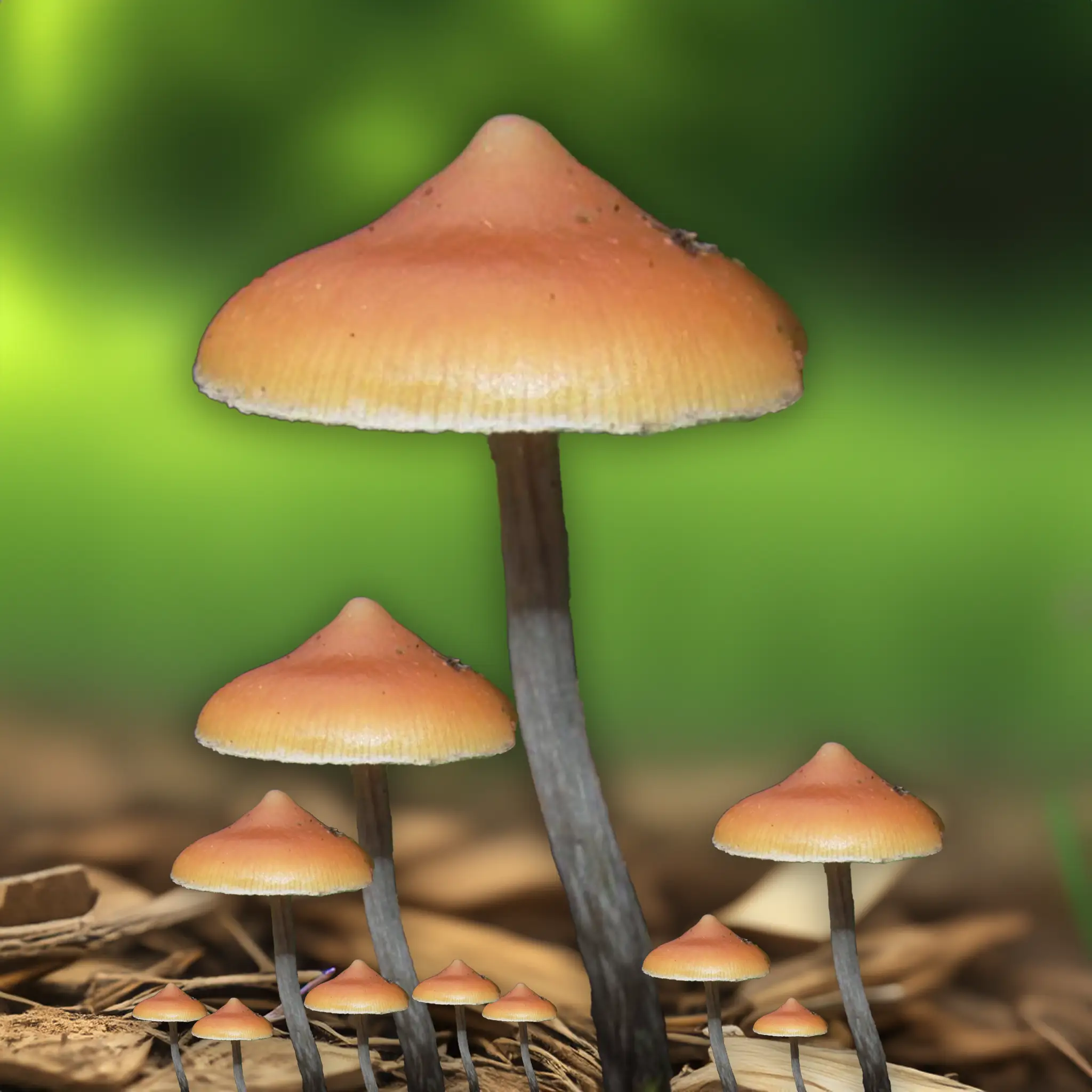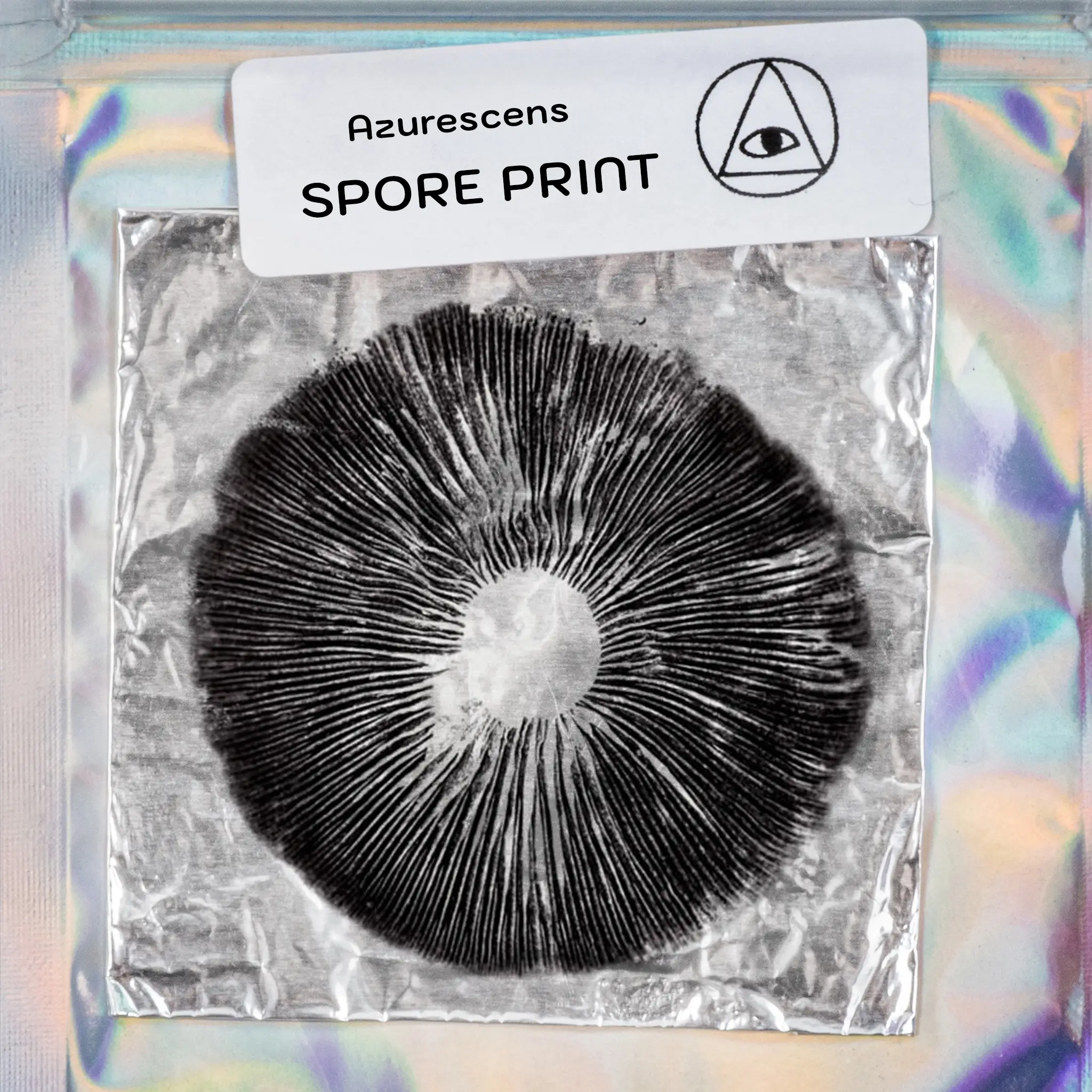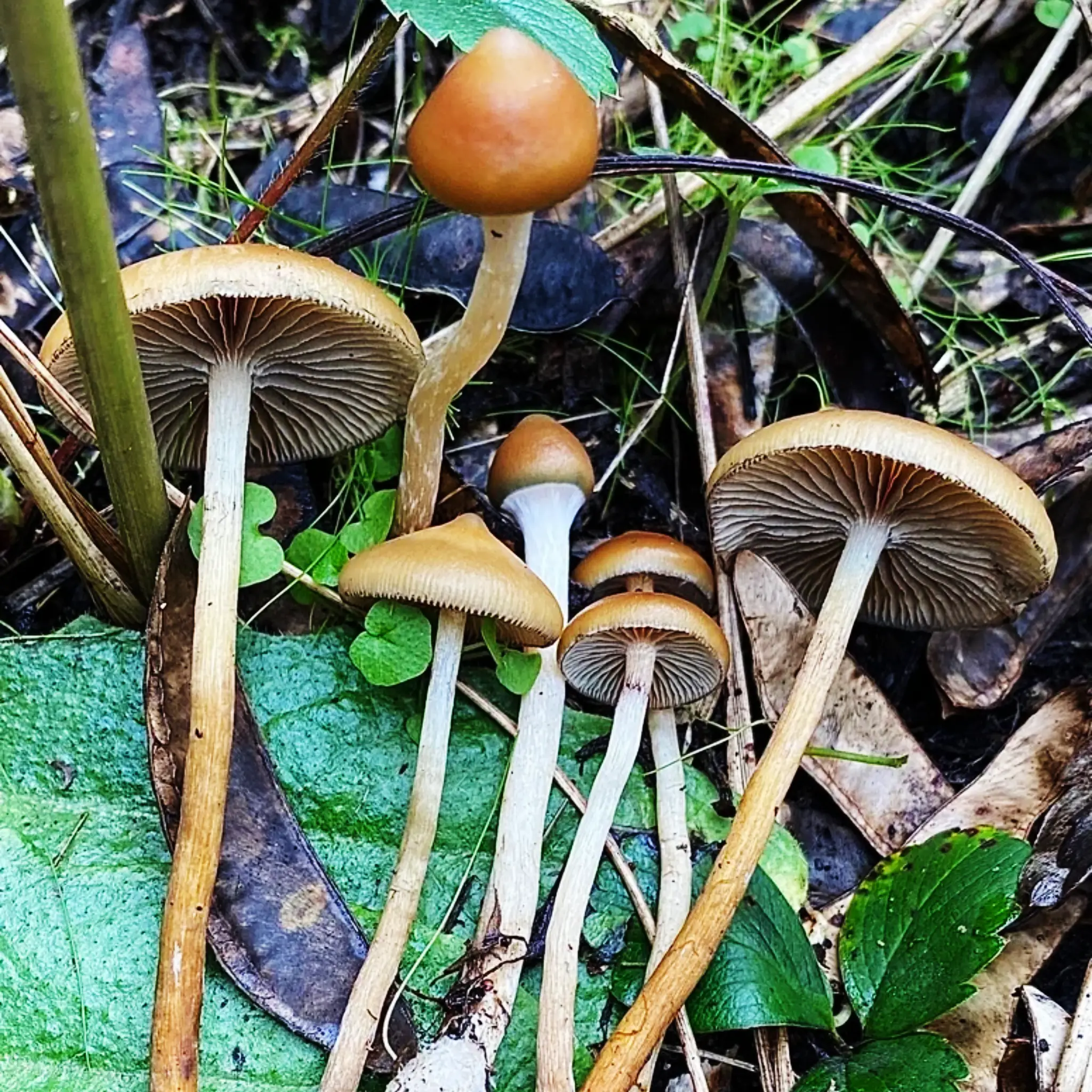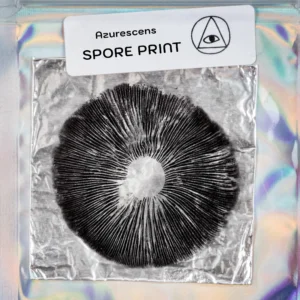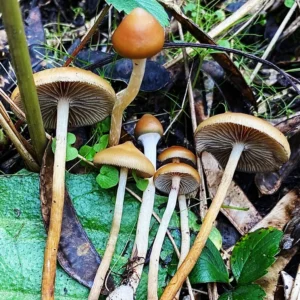 Psilocybe Azurescens Spore print
Psilocybe Azurescens Spore printPsilocybe Azurescens Spore print
$19.99 Original price was: $19.99.$14.99Current price is: $14.99.
-
Species: Psilocybe azurescens
-
Common Name: Flying Saucer Mushroom
-
Spore Color: Dark purplish-brown to purplish-black
-
Print Medium: Sterile aluminum foil
-
Intended Use: Microscopy and taxonomic research
-
Storage: Store in a cool, dry, and dark place; refrigeration recommended for optimal longevity
Psilocybe azurescens: The Potent Pacific Northwest Native
The Psilocybe azurescens, often referred to as the “Flying Saucer Mushroom,” is renowned for its distinctive appearance and high psilocybin content. First identified in 1995 by Paul Stamets and Jochen Gartz, this species is native to the Pacific Northwest, particularly the coastal regions of Oregon and Washington. Its robust alkaloid profile and unique morphological features make it a subject of significant interest in mycological research.
Our Psilocybe azurescens Spore Print offers a high-quality, sterile sample ideal for microscopic examination and taxonomic studies. Each print is meticulously prepared on sterile aluminum foil to ensure purity and viability.
Product Specifications
-
Species: Psilocybe azurescens
-
Common Name: Flying Saucer Mushroom
-
Spore Color: Dark purplish-brown to purplish-black
-
Print Medium: Sterile aluminum foil
-
Intended Use: Microscopy and taxonomic research
-
Storage: Store in a cool, dry, and dark place; refrigeration recommended for optimal longevity
Origins and Discovery
Psilocybe azurescens was first discovered in 1979 near Astoria, Oregon, by a group of Boy Scouts. However, it wasn’t formally described until 1995 by mycologists Paul Stamets and Jochen Gartz. The species thrives in the sandy soils and decaying wood of coastal dune grasses, often forming dense clusters. Its limited natural habitat and potent psychoactive properties have made it a focal point for researchers studying psilocybin-containing fungi.
Unique Features
Cap
The cap of Psilocybe azurescens ranges from 3 to 10 cm in diameter, initially conic to convex, expanding to broadly convex and eventually flattening with age. It possesses a pronounced, persistent broad umbo. The surface is smooth, viscous when moist, and covered by a separable gelatinous pellicle. Coloration varies from chestnut to ochraceous brown to caramel, often becoming pitted with dark blue or bluish-black zones. The cap is hygrophanous, fading to a light straw color upon drying, and strongly bruises blue when damaged.
Stem
The stem measures 9 to 20 cm in length and 3 to 6 mm in thickness, silky white, becoming dingy brown from the base or with age. It is hollow at maturity and composed of twisted, cartilaginous tissue. The base of the stem thickens downward, often curved, and is characterized by coarse white aerial tufts of mycelium, often with azure tones. The mycelium surrounding the stem base is densely rhizomorphic, silky white, and tenaciously holds wood chips together.
Gills
The gills are ascending, sinuate to adnate, brown, often stained black where injured, close, with two tiers of lamellulae, mottled, and have whitish edges.
Mycological Significance
Psilocybe azurescens is among the most potent psilocybin-containing mushrooms, with psilocybin levels up to 1.8% by dry weight. Its robust alkaloid content and distinctive morphological features make it a valuable specimen for microscopic study and taxonomic classification. The species’ affinity for wood-rich substrates and its seasonal fruiting patterns provide insights into fungal ecology and adaptation.
Why Choose Our Psilocybe azurescens Spore Print?
-
Sterile Preparation: Each spore print is produced in an ISO-7 clean room to ensure contamination-free samples.
-
High Viability: Our prints are known for their dense spore deposits, facilitating detailed microscopic analysis.
-
Educational Value: Ideal for academic research, taxonomy, and microscopy enthusiasts seeking to study a potent Psilocybe species.
Legal Notice
This Psilocybe azurescens Spore Print is intended strictly for microscopy and educational research. Cultivation of Psilocybe species is illegal in several U.S. states. Lab Link Supply does not ship to California, Georgia, or Idaho. By purchasing, you affirm that you are at least 18 years old and will comply with all local laws and regulations.
Enhance your mycological studies with the Psilocybe azurescens Spore Print—a potent and intriguing specimen for any serious researcher.
Explore our full range of spore prints and microscopy supplies at Lab Link Supply.
You May Also Like
-
Panaeolus Cyanescens TTBVI Spore Print
Rated 0 out of 5$19.99Original price was: $19.99.$14.99Current price is: $14.99. Add to cart -
Huautla Spore Print
Rated 0 out of 5$19.99Original price was: $19.99.$14.99Current price is: $14.99. Add to cart


